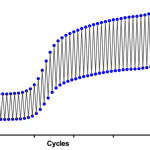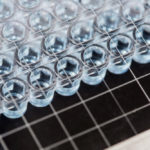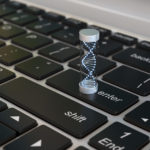LGC Biosearch Technologies
Challenges of Autofluorescence in Neuroscience
If you have ever imaged biological samples, you have likely encountered autofluorescence. That pesky background coloration you see under the microscope, which can make it difficult to distinguish your actual signal from the noise.1 When you are trying to look for something as delicate as RNA, you don’t want to be hunting for your signal…
Read MoreDetecting Signal in qPCR: From DNA Binding Dyes to BHQ Probes
A Brief History of Detecting Amplicons The Old Days of Ethidium Bromide In the early 1990s, quantitative (q) PCR was in its infancy, and despite PCR itself already being around for 10 years, there were no easy ways of precisely quantifying the amount of DNA that was amplified in a PCR reaction. In those days PCR…
Read MoreModify Your Oligos, Modify Your Experiments
If you’ve ever performed PCR, you’re probably already very familiar with DNA oligonucleotides (or oligos). But did you know that these molecules can do so much more than just act as simple primers? You can add a wide range of modifications to your oligos, which may change the stability, binding, solubility and even visibility, to…
Read MoreHow RNA-FISH Can Complement qPCR, and Vice Versa
In studies of RNA abundance and gene expression, no one technique can answer all of the questions that need to be asked. So it is necessary to use a variety of experimental methods in concert. Two RNA detection and measurement techniques that complement each other well for this purpose are RNA Fluorescence in situ hybridization…
Read MoreA primer on Probe-based SNP genotyping
Single Nucleotide polymorphisms (SNPs), colloquially pronounced ‘snips’, are the most common type of genetic variation in people. By definition, a SNP represents a single nucleotide variation at a specific location in the genome that is found in more than 1% in the population. For example, a SNP can replace the nucleotide cytosine (C) with an…
Read MoreA Quick Tour Around Probe-based Multiplexing qPCR
PCR has become the tool of choice for molecular diagnostics and is now a staple platform in any laboratory setting. The versatility of this method has led to a myriad of spin-off techniques, including probe-based quantitative PCR (qPCR). This method effectively combines PCR amplification and detection into a single step to measure the specific amount…
Read MoreHow to detect long non-coding RNA (lncRNA)
According to the central dogma of molecular biology, DNA is transcribed into RNA, that is translated to proteins. Inconveniently, the vast majority of the genome contains sequences that do not actually code for proteins. So, this non-coding RNA (ncRNA) was dismissed as non-functional junk, letting researchers tick the box on their to-do lists and head off…
Read More





